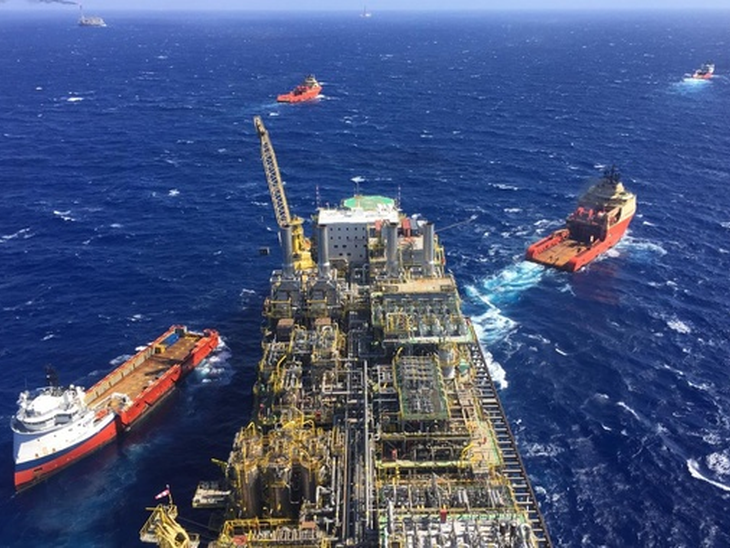Brazilian oil production in March increases 2.8% in relation to February
T&B Petroleum/Press Office ANP
06/05/2019 03:55

In March 2019, the oil and gas production in Brazil increased compared with both the previous month and the same month in 2018. Both totaled 3.261 million of barrels of oil equivalent per day (boe / d).
Oil production in the period was 2.56 million barrels per day (bbl / d), an increase of 2.8% over the previous month and 0.1% compared to the same month in 2018. The natural gas production was 111 million m³ / d, growing 1.2% in relation to the previous month and 4.2% in relation to the same month in 2018.
Production data for March are available on the Monthly Bulletin of Petroleum and Natural Gas Production (http://www.anp.gov.br/publicacoes/boletins-anp/2395-bulletin-mensal-producao-de- natural gas)
Pre-salt
Pre-salt production in March totaled 1.936 million boe / d, up 6% from the previous month and 11% compared to the same month in 2018.
It produced 1.542 million barrels of oil per day and 62.7 million cubic meters of natural gas per day through 91 wells. The participation of the pre-salt in total national production in March was 59.4%.
The pre-salt wells are those whose production is carried out in the geological horizon called pre-salt, in fields located in the area defined in item IV of caput of article 2 of Law 12,351 / 2010.
Use of natural gas
The use of natural gas in Brazil in March reached 94.7% of the total volume produced. 57.1 million cubic meters per day were made available to the market.
Gas flaring totaled 5.9 million cubic meters per day, an increase of 15% compared to the previous month and 76.9% over the same month in 2018.
The main reasons for the increase in gas flaring this month are the beginning of the commissioning of the FPSO platforms P-76 and P-77, both located in the Búzios field.
Producer Fields
The Lula field, in the Santos Basin, was the largest producer of oil and natural gas. It produced, on average, 909 thousand bbl / d of oil and 38 million m3 / d of natural gas. Maritime fields produced 95.7% of oil and 82.4% of natural gas. The production occurred in 7,254 wells, being 684 maritime and 6,570 terrestrial.
The fields operated by Petrobras produced 94.9% of the oil and natural gas.
Estreito, in the Potiguar Basin, had the largest number of producing wells: 1,125. Marlim Sul, in the Campos Basin, was the maritime field with the largest number of producing wells: 66.
The FPSO Cidade de Maricá Platform, producing in the Lula field through six interconnected wells, produced 150,000 barrels per day and was the facility with the largest oil production. The Arara Azul plant, producing in the fields of Arara Azul, Araracanga, Carapanaúba, Cupiúba, Rio Urucu River and Sudoeste Urucu, through 38 interconnected wells, produced 9 million m3 / d and was the installation with the largest natural gas production.
Other information
In March 2019, 308 concession areas, two onerous assignment areas and five sharing areas, operated by 32 companies, were responsible for domestic production. Of these, 79 are maritime and 236 are terrestrial. Of the total of the producing areas, 12 are related to contracts of areas containing marginal accumulations.
The average API grade was 27.6, with 39.7% of the production considered light oil (> = 31 ° API), 48.9% medium oil (> = 22 API and <31 API) and 11.4% oil heavy (<22 API).
The mature terrestrial basins (fields / long-term tests of the Espírito Santo, Potiguar, Recôncavo, Sergipe and Alagoas basins) produced 110,500 boe / d, of which 85.9 thousand bbl / d of oil and 3.9 million m3 / d of natural gas. Of this total, 103 thousand barrels of oil equivalent per day were produced by Petrobras and 7.5 thousand boe / d for concessions not operated by Petrobras, 352 boe / d in Alagoas, 4,203 boe / d in Bahia, 21 boe / d in the Espírito Santo, 2,712 boe / d in Rio Grande do Norte and 186 boe / d in Sergipe.


